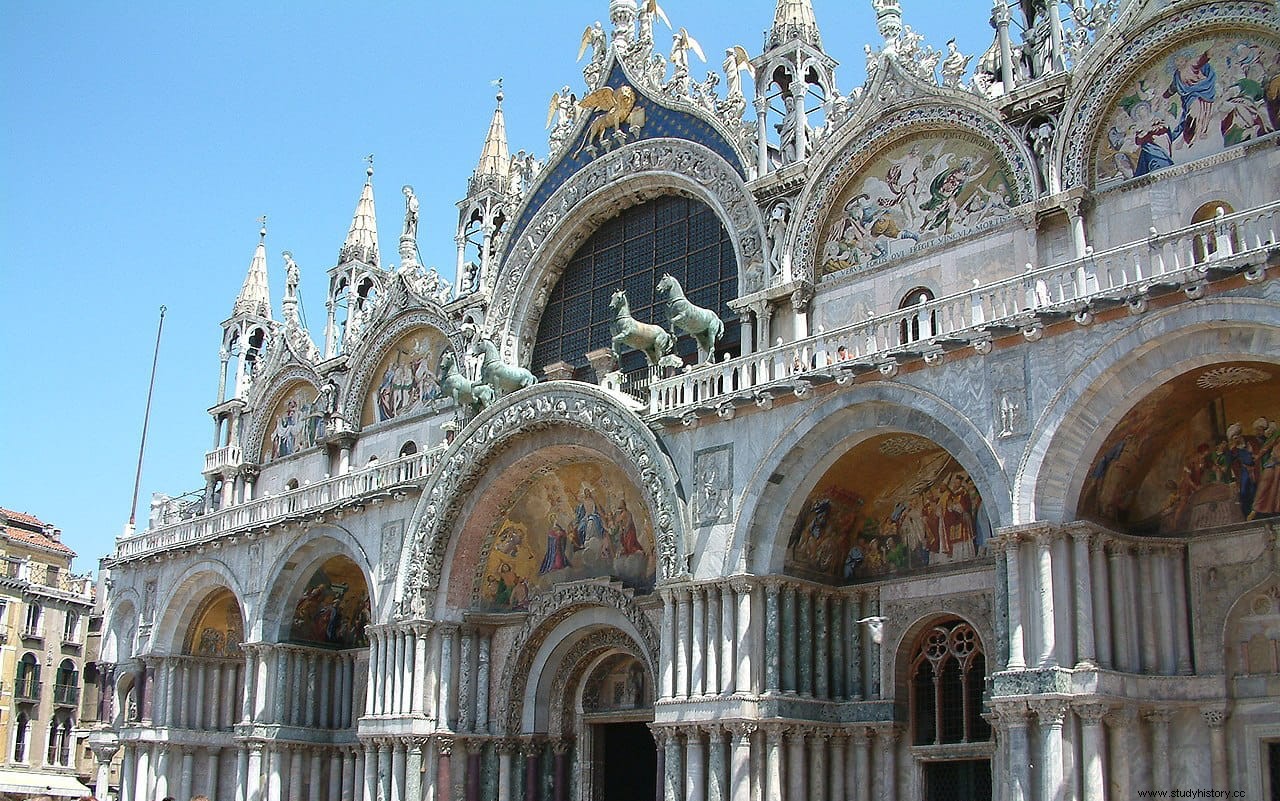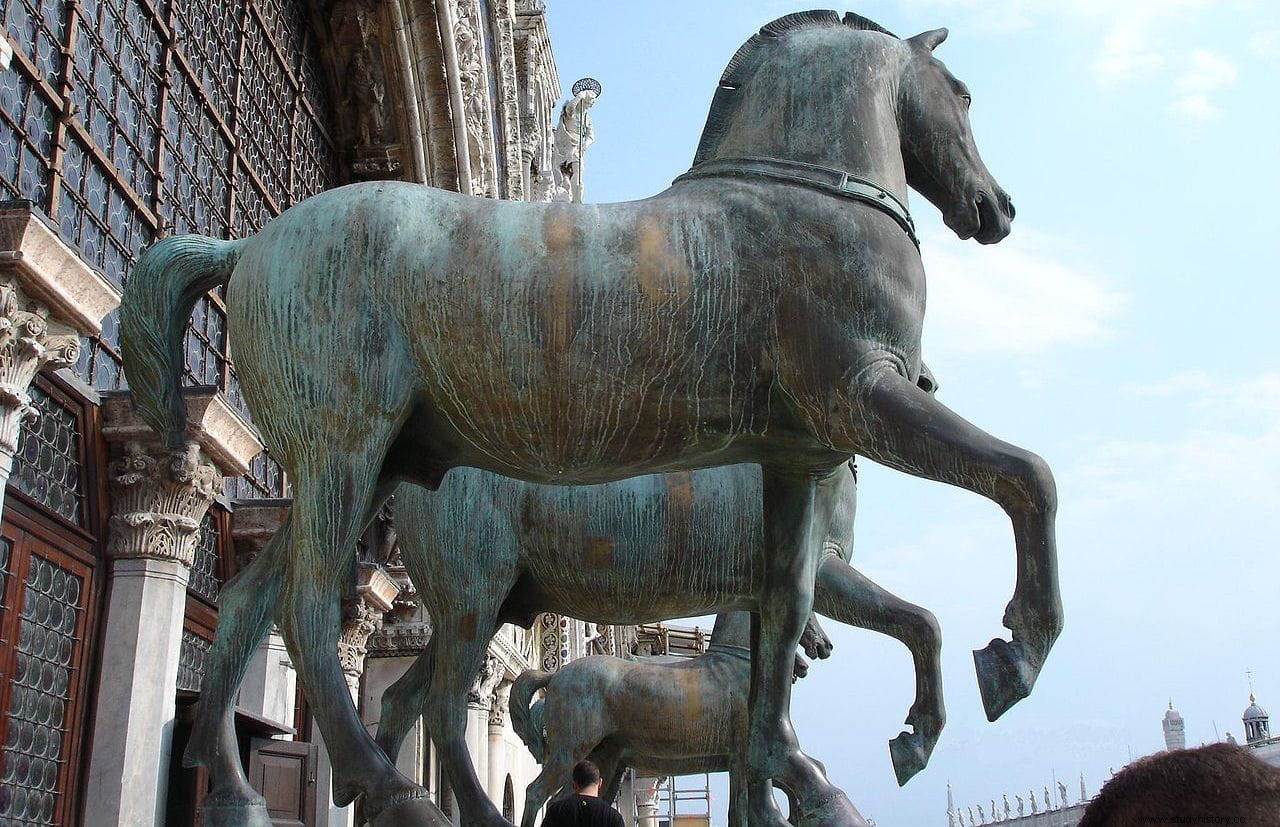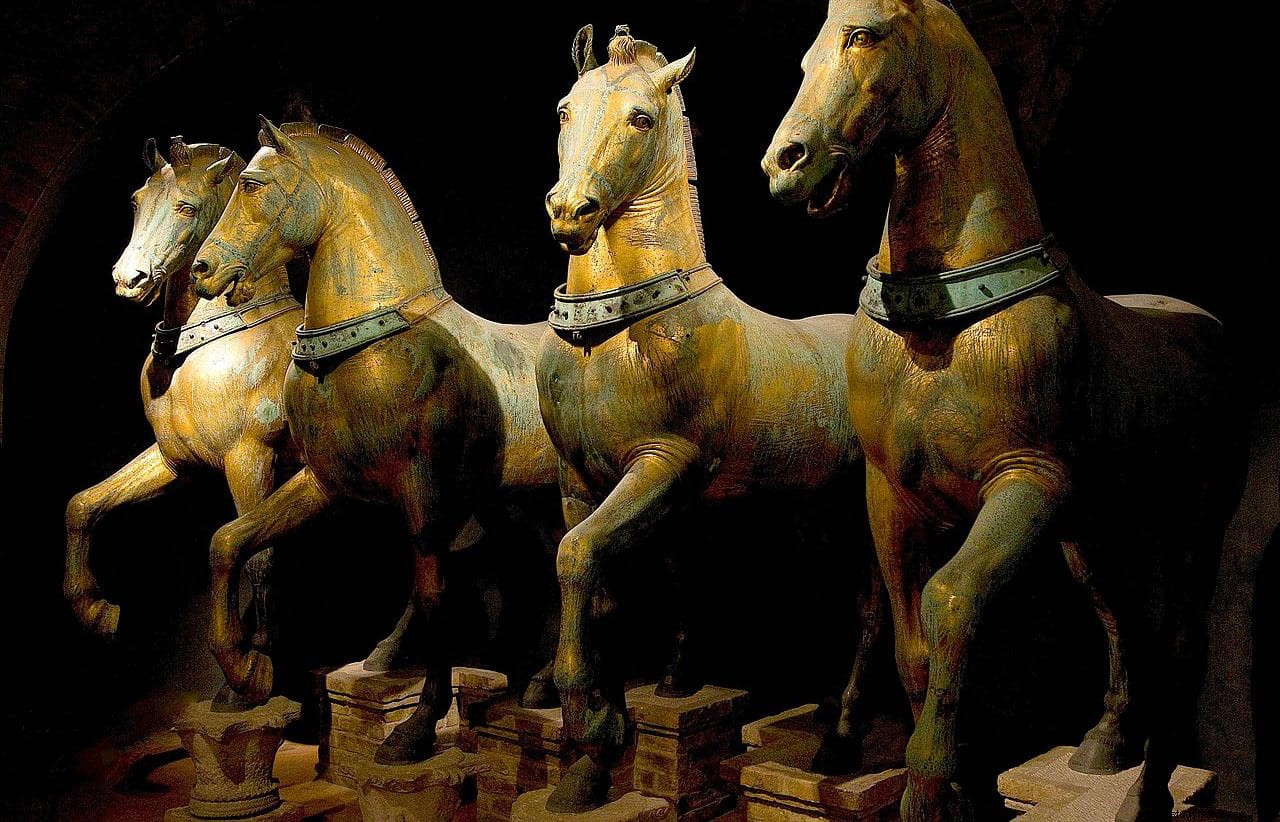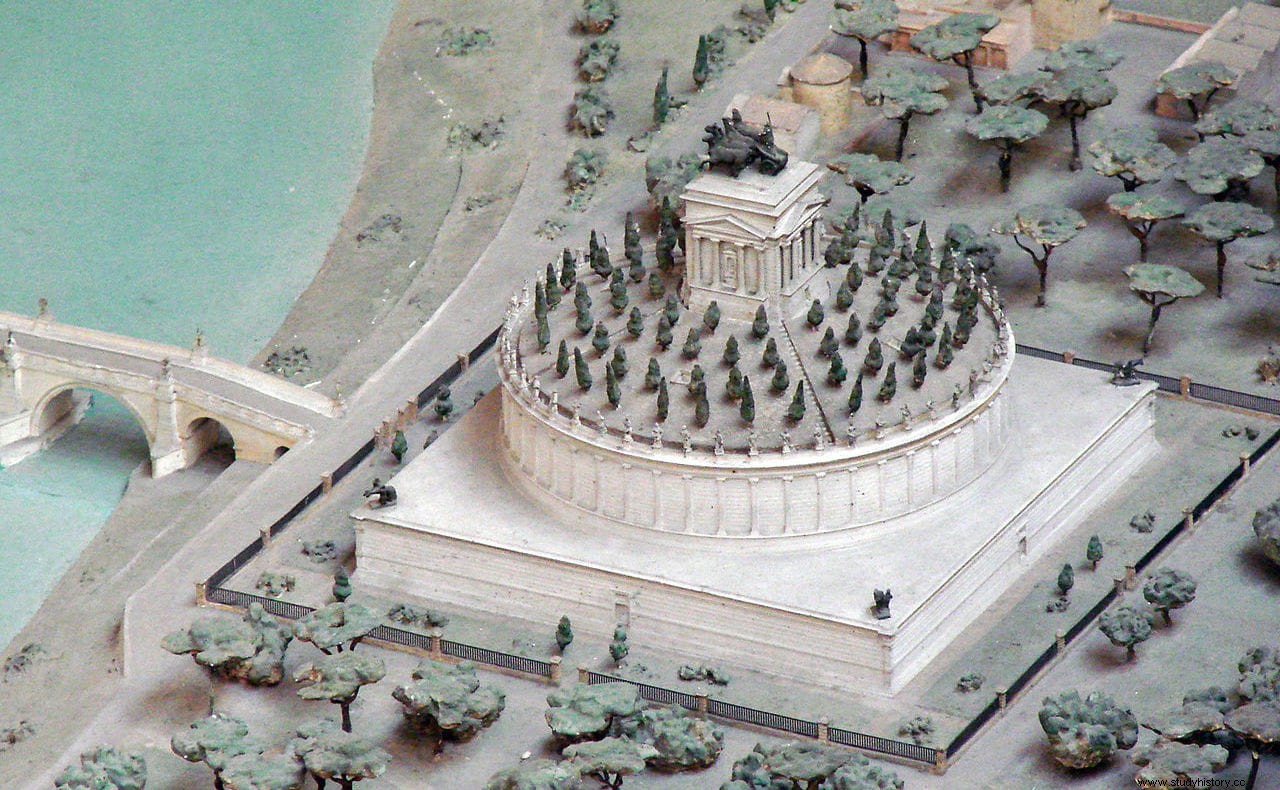In the gallery above the portal of St. Mark's Basilica in Venice there are four large horse sculptures popularly known as the Horses of St. Mark . These sculptures are older than the basilica itself, as they come from the Hippodrome of Constantinople.
They were part of a sculptural monument that represented a complete chariot, similar to those that adorned other ancient buildings such as the Halicarnassus Mausoleum. It is not known exactly where this chariot was originally located, but it is believed that it must have crowned a triumphal arch or another public building.
There is also no consensus on the date of its creation. Some experts believe that they may be the work of a Greek sculptor from the 4th century BC. However, others tend to date them between the 1st and 3rd centuries AD.

In the Parastaseis syntomoi chronikai , a Byzantine text from the late 8th to early 9th centuries AD. commenting on the existing monuments in Constantinople at that time, there is talk of four golden horses presiding over the hippodrome and it is added that they came from the island of Chios in the time of Theodosius II .
According to some hypotheses they could come from the triumphal arches of Nero or Trajan in Rome, or even Hadrian's mausoleum. Restoration works carried out between 1977 and 1981 did not reveal any elements that could lead to a precise dating.
What is known is that for centuries they were in the hippodrome of the Byzantine capital, where the Crusaders found them in 1204 when they stormed Constantinople during the Fourth Crusade. The main Crusader contingent was 10,000 Venetian soldiers under Doge Enrico Dandolo, and horses were among the loot sent to Venice.

In order to be able to transport them easily in the Venetian galleys, they had to cut the statues at the height of the neck, so, once they arrived in Venice, they were rejoined by adding a necklace to each one, as a decorative band, to hide the cuts. .
The sculptures are made with a bronze whose tin content is very low. Antique bronze is typically 85 percent copper, 10 percent tin, and a small amount of lead and impurities. Horses are almost 98 percent copper, and only 1 percent tin and 1 percent lead, a technique that was especially widespread during the Roman Empire.

They are 2.33 meters high by 2.53 meters long and weigh 900 kilograms each. The surface of the horses was gilded with mercury and then scratched into parallel striations of constant width with a chisel, to nuance the golden effect when reflecting the sun. Roman numerals are engraved on the helmets and halters, the function of which is unknown.
Some 50 years after being sent to Venice by Dandolo (who died in 1205 and is buried inside the Basilica of Saint Sophia in Constantinople, today Istanbul) the horses were installed on the gallery of Saint Mark's Basilica. 
But his story would not end there. Five centuries later, in 1797 Napoleon defeated the Republic of Venice and the French took everything they could from it:works of art, jewellery, armor... The Venetian treasure was melted down, as well as that of San Marco, the Bucintoro was dismantled to extract the gold from the decorations, and some 30,000 works of art from all periods were sold or disappeared. Among the works that were sent to France were the lion of Saint Mark and the four golden horses.
Napoleon first ordered them to be placed at Les Invalides, then at the gates of the Tuileries and later, in 1806, he ordered the construction of the Arc de Triomphe du Carrousel to commemorate his victories, and that it be crowned by a bronze chariot pulled by four horses. of San Marco.

Thus, the sculptures remained in Paris until finally both the lion and the horses were returned to Venice in 1815 by the Austrian emperor after Napoleon's defeat at Waterloo, although the lion statue was broken when it was removed from the Esplanade des Invalides . The horses that today crown the Parisian Arc de Triomphe are replicas of the originals.
For the second time, they were once again placed in the gallery of St. Mark's Basilica, where they remained permanently until 1981, with only two exceptions:during the First World War the horses along with other treasures from northern Italy were taken to Rome for protection. and, temporarily, they were stored in the Castel Sant'Angelo. A curious coincidence if we take into account that one of the hypotheses about their origin states that they come from Hadrian's mausoleum, which is none other than the current Castel Sant'Angelo. During World War II they were kept in the monastery of Praglia, near Padua.

Due to deterioration due to pollution, it was decided to replace them with replicas, which are the ones that can be seen today presiding over the famous Venetian square. The authentic ones are kept inside the basilica, where they are exposed to the public in the cathedral museum. They are the only elements of a classical period bronze chariot that have survived to the present day.
